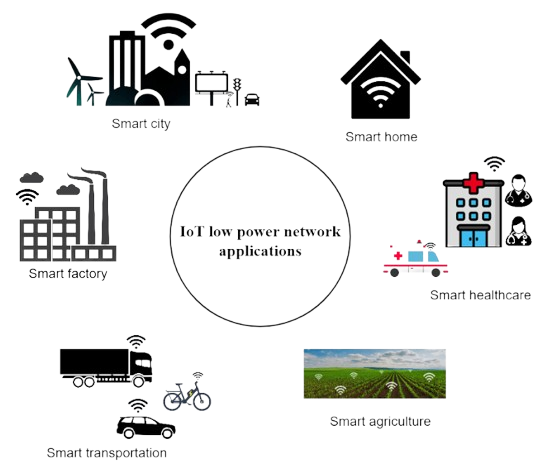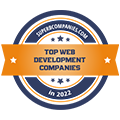Low-power IoT devices are redefining the future of connectivity by enabling smarter, more energy-efficient systems. These devices are paving the way for innovations in a variety of industries, from agriculture to healthcare. By reducing energy consumption and extending battery life, low-power IoT devices offer a sustainable solution that meets the demands of modern technology.
The world of connectivity is evolving rapidly, and one of the driving forces behind this revolution is low-power IoT devices. These devices are transforming the way we interact with the world around us by enabling smarter, more efficient systems. From industrial applications to personal use, these IoT devices are changing the way we think about connectivity, efficiency, and sustainability.
The Importance of Low-Power IoT Devices
As IoT continues to expand, the need for energy-efficient devices has never been more critical. Traditional IoT devices rely heavily on constant power sources or frequent recharging, creating challenges in scalability and efficiency. However, these IoT devices are designed to consume minimal energy, offering a more sustainable solution for continuous operation. These devices can work for extended periods on a single charge, which is an essential feature for IoT applications that require long-term deployment.
Enabling Remote Monitoring and Control
One of the key advantages of these IoT devices is their ability to enable remote monitoring and control in hard-to-reach or isolated locations. These devices are increasingly being deployed in environments such as agricultural fields, oil rigs, and remote weather stations. With their long battery life and low energy consumption, low-power IoT devices are proving to be the ideal solution for monitoring conditions without the need for constant maintenance.
Efficient Communication for Extended Battery Life
The efficiency of these IoT devices comes from their ability to transmit data intermittently, only when necessary, instead of constantly communicating. This intermittent communication reduces the energy required for data transmission, which is one of the most power-hungry processes in traditional IoT devices. By optimizing their communication patterns, these devices can last for years without the need for battery replacements, which is especially beneficial in applications that require minimal human intervention.
Impact on Smart Cities
Another area where these IoT devices are making a significant impact is in the development of smart cities. These devices are being used to monitor everything from air quality to traffic patterns, providing real-time data that can improve urban planning and decision-making. By collecting and analyzing data from low-power IoT devices, cities can optimize resource usage, reduce energy consumption, and enhance the quality of life for their residents. These devices are integral to the future of sustainable urban living.

Advancements in Wearable Technology
The rise of these IoT devices has also paved the way for advancements in wearable technology. Devices such as fitness trackers, health monitors, and smartwatches are now designed to be more energy-efficient, enabling them to operate for extended periods without frequent charging. This is especially important for individuals who rely on these devices to track their health, as it ensures that the devices remain operational even during long periods of use.
Cost Savings and Sustainability for Businesses
For businesses, these IoT devices offer significant cost savings by reducing the need for infrastructure investments and lowering energy consumption. Companies can deploy large networks of these devices for monitoring purposes without incurring high operational costs. Additionally, low-power IoT devices can reduce the environmental impact of business operations, making them more attractive to organizations looking to implement sustainability initiatives.
Enhancing Industrial Efficiency
In the industrial sector, these IoT devices are enabling predictive maintenance by constantly monitoring equipment conditions. These devices collect data on machine performance, providing valuable insights that help companies anticipate and address issues before they result in costly breakdowns. By improving equipment efficiency and reducing downtime, low-power IoT devices are helping industries stay competitive while minimizing operational costs.
Scalability and Ease of Deployment
The scalability of these IoT devices makes them an ideal choice for large-scale deployments. Whether it’s a network of sensors monitoring environmental conditions or a fleet of connected devices used in logistics, the ability to scale up without worrying about power consumption is a significant advantage. As the number of connected devices continues to grow, low-power IoT devices will play a pivotal role in ensuring that these networks remain efficient and manageable.
Ensuring Security in IoT Networks
Security is another critical consideration when deploying these IoT devices. As these devices become more integrated into daily life, ensuring their security is vital to prevent unauthorized access and potential data breaches. Many low-power IoT devices incorporate advanced encryption protocols to protect the data they transmit, ensuring that sensitive information remains secure. However, with the increasing complexity of IoT networks, cybersecurity will remain an ongoing challenge for manufacturers and developers.
The Future of Connectivity with Low-Power IoT Devices
As the demand for connected devices continues to surge, low-power IoT devices are helping bridge the gap between technology and sustainability. By reducing energy consumption while maintaining high-performance capabilities, these devices are making IoT applications more accessible and viable in diverse industries. They enable the creation of intelligent systems that can operate autonomously, without constant human intervention or resource consumption.
Conclusion
Low-power IoT devices are redefining the future of connectivity by enabling smarter, more energy-efficient systems. These devices are paving the way for innovations in a variety of industries, from agriculture to healthcare. By reducing energy consumption and extending battery life, these IoT devices offer a sustainable solution that meets the demands of modern technology. If you’re interested in deploying low-power IoT devices for your business, Tanbits offers cutting-edge IoT services that cater to your specific needs.
In the coming years, low-power IoT devices will become even more integral to our daily lives. As technology continues to advance, these devices will continue to evolve, opening up new possibilities for connectivity, sustainability, and innovation. Whether you’re a business looking to optimize operations or an individual seeking smarter, more efficient solutions, These IoT devices are the key to unlocking a more connected future.
BACK










